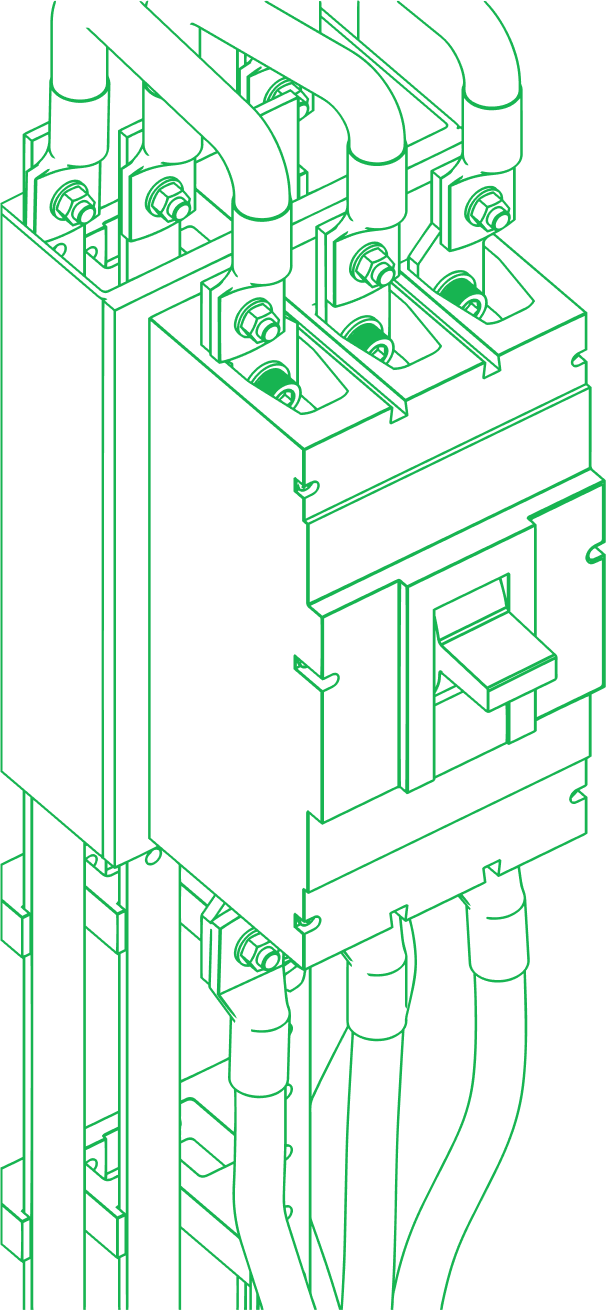Table of Contents
Question: What would happen if a company had an amazing pitch, but a terrible product?
Answer: They would probably make a lot of sales…once. They wouldn't retain any customers, and eventually they would run out of first-time buyers.
For a company to survive, and ultimately thrive, they must retain customers. They need second, third, fourth, and tenth time repeat customers. When customers fall in love with a product, they often become evangelists for that product (and company), telling others about it and giving the marketing department some much needed rest in the process!
Increasing customer retention doesn’t just happen, though. Not only does a company’s product have to provide value and solve a problem for the customer, the company itself must also put in the necessary effort to nurture the relationship with the customer.
That’s where automation comes in.
TL;DR: Why does automating customer retention matter for long-term growth?
-
Repeat customers drive long-term growth, not just one-time sales
-
Automation keeps communication timely, personal, and consistent
-
Tools like email workflows, loyalty tracking, and chatbots increase retention
-
Metrics like CLV, AOV, and NPS tell you what’s working and what’s not
-
Predictive analytics spot churn before it happens so you can act fast
-
Without retention, you’re always hunting for new customers just to survive
What does customer retention mean and why does it matter?
Before getting into how customer retention can be automated, let’s make sure we have a definition of it hammered out first.
Customer retention refers to the strategies and actions a business takes to keep existing customers engaged and loyal to the brand. It involves building relationships with customers, providing excellent customer service, and addressing any concerns or issues promptly and effectively.
Why is this so important?
- Retaining existing customers is typically more cost-effective than acquiring new ones.
- Improves customer lifetime value
- Increases revenue
- Builds a strong brand reputation
How can you automate customer retention without losing the human touch?
Keeping your customer base engaged and loyal is a goal of every company, and it’s often much easier said than done. One way to help make it easier is to automate when possible. Here are a few examples of how to get your customer retention strategies out of the 1990s:
Automated Email Campaigns
Companies can create automated email campaigns that are triggered by customer behavior, such as abandoned carts, purchases, or product views. These emails can include special offers, discounts, and other incentives to encourage customers to remain loyal and can be personalized and designed to drive engagement and sales.
For seamless setup, explore our HubSpot onboarding services to ensure your CRM is built to execute these campaigns flawlessly.
Loyalty Program Automation
Companies can automate loyalty programs by using software that tracks customer activity and rewards them accordingly. This can include automated point tracking, reward redemption, and personalized offers. These programs can be personalized based on customer preferences and behaviors and can be integrated with other marketing automation tools to provide a more seamless and rewarding experience for customers, encouraging them to remain loyal.
Chatbots/Customer Service
When it comes to automating customer service, companies can implement chatbots and other automation tools to provide fast and efficient support (no human agents needed!). These tools can use natural language processing to understand customer queries and provide relevant responses in real-time. In addition, customer data can be used to personalize the support experience and provide proactive solutions to problems.
Predictive Analytics
If there’s one thing that keeps everyone from content marketers to CEO’s up late at night, it’s customer churn rate. Through the use of predictive analytics, companies can identify customers who are at risk of churning. By identifying these customers, companies can take proactive measures to prevent them from leaving, such as personalized offers, discounts, and other incentives designed to keep customers coming back.
Using our HubSpot integration services, you can ensure your tools and data work together seamlessly to enable predictive analytics.
What are the benefits of automating customer retention?
As mentioned above, retaining customers is important for a number of reasons including cost- effectiveness, improving customer lifetime value, increasing revenue, and building a strong brand reputation. When you automate the process, there are additional benefits. The list is too long to name them all, so in the interest of keeping this blog under 9 minutes, here a few that just can’t be ignored:
Consistent Communication
Automated communication can be used to keep customers informed about new products, services, and promotions. This helps to keep the business top-of-mind and can increase customer engagement and loyalty.
Streamlined Processes
They say speed kills, but customers tend to disagree. If a company can decrease the amount of time it takes to do something without sacrificing quality, then it’s a no brainer. Automation can reduce the chance of errors and streamline customer-facing processes such as onboarding, account setup, and billing. This improves the overall customer experience, which can lead to higher retention rates.
Timely and Consistent Follow-Ups
Automation can be used to set up timely and consistent follow-ups with customers, such as post-purchase emails or reminders to renew subscriptions. This ensures that customers feel valued and engaged with the brand, which can lead to increased loyalty and retention.
Which customer retention metrics should you track?
Companies aren’t guessing when it comes to whether or not they’re doing a good job of retaining customers. There are key metrics, or key performance indicators, which provide an accurate 30,000 foot view of what’s going on. Here are some of the most common customer retention metrics:
Net Promoter Score (NPS)
If you really want to know what your customers think about you, just ask them! NPS is a metric used to measure customer loyalty and satisfaction by asking customers to rate how likely they are to recommend a brand to others. By tracking NPS over time, companies can determine whether their automated retention efforts are increasing customer loyalty and satisfaction.
Average Order Value (AOV)
This measures the average amount customers spend on each transaction. By using automation to increase AOV, businesses can increase revenue and profitability. A few ways to do this include personalized recommendations, bundling and upselling, discounts and promotion, and a streamlined checkout process.
Repeat Purchase Rate
Not all customers are created equal. Repeat purchase rate is the percentage of customers who make more than one purchase over a given period of time. This metric can help businesses identify their most loyal customers and target them with personalized retention efforts.
Engagement
This includes metrics such as open rates, click-through rates, and time spent on a website or app. By tracking these metrics, you can determine whether your automated retention efforts are effectively engaging customers and driving conversions.
Customer Lifetime Value (CLV)
Some customers make one purchase one time, while others make dozens of purchases a year across a 20 year span. This is where CLV comes in. It’s a metric used to measure the total value a customer brings to a business over their lifetime. This can help businesses identify their most valuable customers and develop retention strategies to keep them engaged. By tracking this metric over time, it’s quite easy to determine whether automated retention efforts are increasing the value of customer relationships.
Check out our HubSpot technical consulting services to build the systems needed to track CLV accurately.
Can I Afford to Automate Customer Retention?
Can you afford not to? While there are certainly some costs associated with the purchases of tools that make customer retention automation possible, the downsides of not doing it are potentially catastrophic for a company:
Low Employee Morale
Most people have a desire to feel that their work is important. When employees see that their efforts are not resulting in customer satisfaction and loyalty, it can lead to job dissatisfaction and turnover.
Reduced Brand Loyalty
Hotel legend Horst Schulze says that dissatisfied customers “become terrorists for your organization”. When customers leave a business, they are likely to share their negative experiences with others, which can damage the company's reputation and reduce brand loyalty. Low customer retention rates can signal to potential customers that a business is not meeting their needs.
Decreased Revenue
Low customer retention rates mean that businesses are losing customers, which translates to decreased revenue. This is because it is more expensive to acquire new customers than it is to retain existing ones. This can be especially impactful for businesses with high customer acquisition costs.
How does automated retention keep customers coming back?
Pyramid schemes don’t work. The main reason is because as the pyramid grows, it becomes harder and harder to recruit new participants. Eventually, the pool of potential recruits becomes too small to sustain the scheme.
No legitimate company wants to think of themselves in this way, but if you aren't retaining your customers, then you are essentially going to experience the same fate. If a company's current and past customers are one and done, then eventually that company will run out of people to sell to.
Automating customer retention efforts can help ensure that every measure is being taken to engage customers, streamline their interactions with the company, and provide consistent and accurate information to them.
If you're switching to HubSpot, our HubSpot migration services ensure a smooth transition to a platform built for retention.
The bottom line: customer retention isn't a vanity metric, it's vital for the survival of your company.
Want to learn the blueprint to optimizing revenue?
Download our whitepaper on the 4 levers of revenue growth
.png)

.png)
.png)
